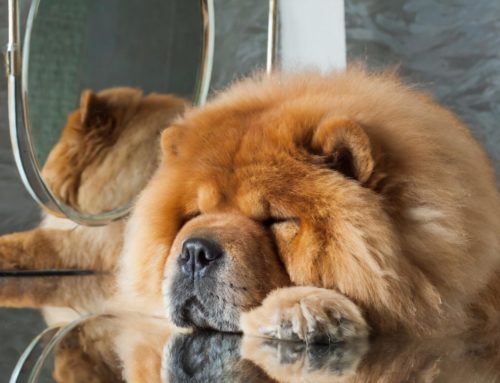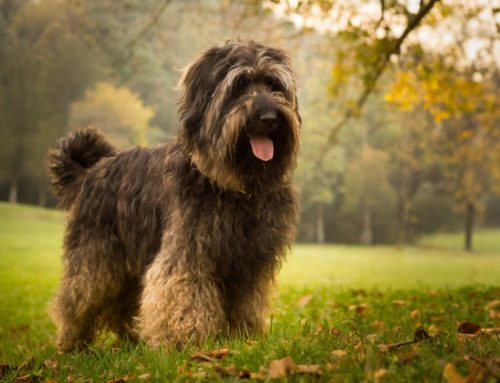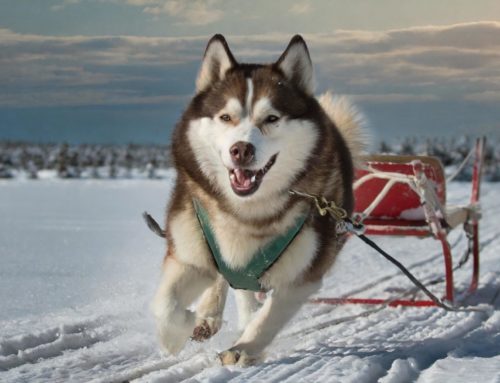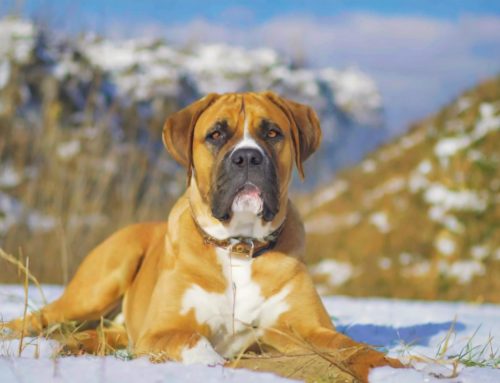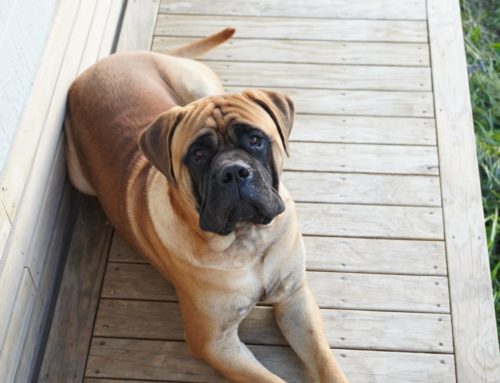
The Barbet is a very old breed, whose origins date back to the Middle Ages. This breed gets its name barbet from the French word barbe, meaning beard, a reference to the distinctive beard that hangs from the dog’s entire body, including the face.
Originally bred for retrieving shot water game, the Barbet is known for its water-repellent, shedding coat that falls into strands and needs regular grooming to prevent tangles.
The Barbet has a history as both a hunting dog and a pet dog. Its friendly and cheerful nature, combined with an ability to work well with other dogs, makes it valued for its qualities as a fine house dog.
The breed only gained more fame outside France in the late 20th century and today is also appreciated for its social nature. A Barbet is more attracted to activities that require cooperation with its owner and is relatively easy to raise due to its eagerness to cooperate.
This breed is known for its versatility, both in dog sports and in everyday life as a companion dog.
The appearance of these water dogs
The Barbet, known as a French water dog, with its characteristic beard and curly coat. This medium-sized dog, with an adult male dog measuring 58-65 cm and female 53-61 cm, is valued as a family dog and for its skills in dog sports.
The Barbet’s coat, which is mainly found in blond and sandy shades, is water-repellent and woolly, covering the entire body including the beard.
This coat, which does not shed but does lose undercoat, requires regular grooming to prevent tangles. Breeders and breed associations such as the Barbet Club recommend trimming the coat a few times a year and weekly brushing.
This makes grooming the Barbet a weekly outing, which many owners find enjoyable. The Barbet, which has been around for centuries, was originally used for hunting water game.
Nowadays, he is also appreciated for his friendly and cheerful nature. He is known as a balanced and inquisitive dog, which is relatively easy to raise, provided with a consistent hand.
Hereditary diseases and disorders
The Barbet, a water dog known for its curly coat and friendly nature, is generally a healthy breed, but as with any breed, there are some hereditary conditions and diseases that potential owners should be aware of:
- Hip dysplasia: A common condition in medium and large breeds, where the hip joint is not shaped correctly, which can lead to arthritis and pain.
- Elbow dysplasia: Similar to hip dysplasia, this involves abnormal development of the elbow joints, which can cause lameness.
- Progressive Retinal Atrophy (PRA): A degenerative eye disease that can eventually lead to blindness.
- Cataract: Clouding of the lens of the eye, which can result in impaired vision and possibly blindness.
- Entropion: A condition in which the eyelid rolls inward, which can cause irritation and damage to the surface of the eye.
- Epilepsy: A neurological disorder that leads to convulsions.
- Heart problems: Includes conditions such as mitral valve disease, which can affect heart function.
- Allergies: The Barbet may be prone to certain allergies, which can cause skin and food-related problems.
The character of the Barbet
As a hunting dog, the Barbet has a natural aptitude for retrieving water game, which is reflected in their love of water and exercise. They are known for their friendly and cheerful nature, which also made them more famous outside France in the 20th century.
The Barbet is a real family dog that wants to work well with people and is easy to raise due to its balanced and inquisitive nature. These dogs are also drawn to dog sports and love to go for long daily walks.
Their coat can be left very long or shortened a few times a year with scissors or clippers. The most common colours are blonde and sandy. Their social nature and the fact that their fur does not shed make them particularly suitable for people looking for a well-built, pleasant companion dog.
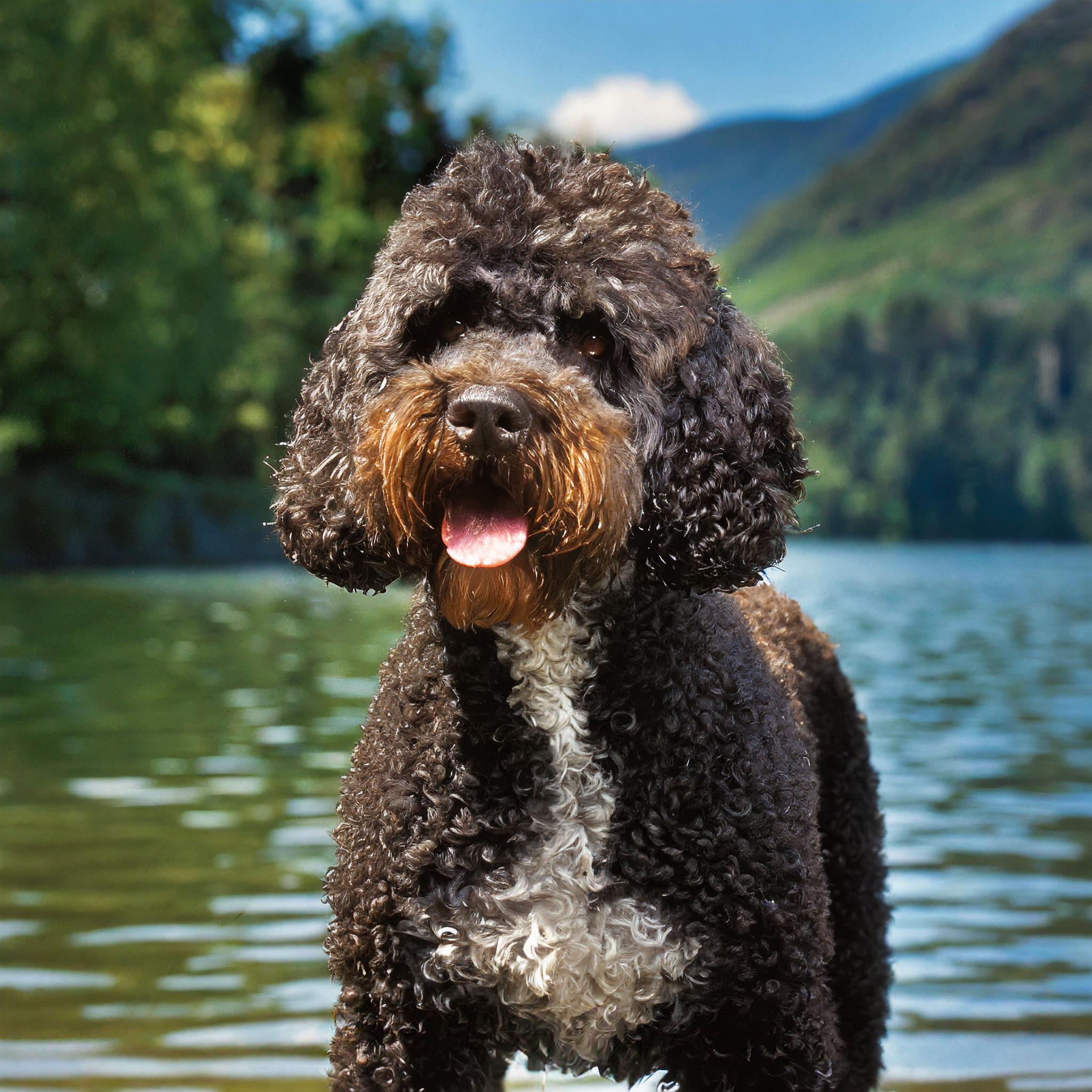
The Care of the Barbet
The Barbet, With curly coat that covers the entire body. The care of this coat is crucial to the Barbet’s health. Regular brushing is necessary to prevent tangles and the retention of dirt in the coat. For owners who want their Barbet’s coat to grow very long, frequent brushing and even professional trims are required.
The coat can fall into strands, especially in the blond and sandy-coloured Barbets, and can be shortened a few times a year to make maintenance easier. Despite being relatively easy to raise thanks to its friendly and cheerful nature, the Barbet does require regular exercise.
Daily long walks are essential, as are activities that suit its natural aptitude for fetching, such as retrieving waterfowl. It is important to prevent problems by taking good care of the Barbet’s coat and skin. This also means checking the ears and eyes regularly, especially as these dogs are often in the water.
Socialisation and upbringing of the Barbet
The Barbet is a medium-sized dog, known for its friendly and cheerful nature. This breed, which has been around for centuries, is relatively easy to raise. Thanks to its social nature, today the Barbet is also appreciated outside France, not only as a working dog but also as a pleasant family dog.
An important aspect of raising a Barbet is regular socialisation. The breed has a history of being used for retrieving, especially in water, which means they can work well with their owner. They enjoy interactions with people and other dogs, which helps them become balanced and well-adjusted pets.
Regular grooming is also part of their upbringing. The Barbet’s dense, water-repellent coat, which can consist of blonde and sand-coloured strands, requires regular brushing to prevent tangles and the retention of dirt and undercoat.
A weekly brushing is not only necessary for the health of their coat, but also provides an excellent opportunity for bonding and training. In addition, the Barbet needs daily exercise. Long walks and play sessions help these energetic dogs release their energy and prevent unwanted behaviour.
How much experience does a Barbet require
The Barbet, a well-built dog with a history dating back to ancient times. This breed is suitable for both experienced and inexperienced dog owners, as it is relatively easy to raise. The Barbet is known for its willingness to work with its owner, which facilitates training and socialisation.
For inexperienced owners, it is important to know that the Barbet requires regular grooming. Its curly coat, which falls into strands, needs frequent brushing to remove tangles and dirt that linger.
This breed does lose undercoat, so regular brushing is essential to avoid problems. For many, grooming becomes a weekly outing and an opportunity to strengthen the bond with their dog. Both blonde and sand-coloured Barbettes, need long daily walks and enjoy activities such as fetch, making them ideal for owners who are drawn to dog sports.
Their ability to work well with the owner and pleasant nature make them a suitable choice for both experienced and inexperienced owners who are willing to devote time and attention to their care and upbringing.
How much exercise does a Barbet need?
The Barbet, needs adequate daily exercise to stay healthy both physically and mentally. This dog is especially pleasing to owners who are attracted to an active lifestyle and enjoy taking long walks or playing outdoors. Thanks to their intelligent and cooperative nature, training a Barbet is often a positive experience.
It is recommended that a Barbet get at least one long walk daily, in addition to the opportunity to play and run freely. This breed has a rich history as a water dog and therefore enjoys water-related activities. Regular physical activities help the Barbet expend its energy and prevent behavioral problems that can arise from boredom or lack of exercise.

How is it getting along with children?
Known for its friendly and cheerful nature, the Barbet is known as an excellent family dog that gets along well with children. This medium-sized dog has a balanced and inquisitive temperament, which contributes to its ability to adapt to a family environment.
The Barbet is valued for its social nature and enjoys interacting with all family members, including children. The Barbet’s gentle and playful nature makes it a pleasant companion for children.
These dogs are patient and tolerate children’s playful behaviour well, provided children are taught how to treat the dog respectfully and gently. Thanks to its inquisitive nature, the Barbet can easily be raised to cope well with the hustle and bustle of a family with children.
Thanks to the Barbet’s thick, curly coat, which can fall into strands, children often enjoy playing with and brushing the dog, which can help develop a sense of responsibility in children.
Benefits of a Barbet
- Social and Friendly: The Barbet is known for its friendly and cheerful nature. It gets along well with children and other pets, making it an excellent family dog.
- Intelligence: These dogs are intelligent and eager to learn, which makes training and socialisation relatively easy.
- Health: In general, Barbets are a healthy breed, although a good breeder is important for preventing hereditary diseases.
- Versatile: They are suitable for a variety of dog sports and activities, including fetching and swimming.
- Non-Shedding Coat: The Barbet’s coat does not shed much, which can be pleasant for people with allergies.
Disadvantages of a Barbet
- Coat Care: The curly, woolly coat requires regular and thorough grooming to prevent tangles and matting.
- Activity requirements: An energetic and active dog, the Barbet needs plenty of daily exercise.
- Limited Familiarity: Outside France, the breed is less well known, which can lead to limited availability of experienced breeders and breed information.
How old will a Barbet get?
The life expectancy of a Barbet, a medium-sized and robust French water dog, generally varies. These dogs can reach an age of around 13 to 15 years. Of course, this depends on several factors, including genetics, lifestyle, diet and the overall healthcare they receive.
As healthy and well-built dogs, Barbets often have a good quality of life. An important factor contributing to their longevity is the quality of care they receive. This includes regular veterinary checks, a balanced diet, adequate exercise and mental stimulation, as well as good coat care.
Price of a Barbet
The Barbet, a relatively rare breed within the US, presents some challenges in establishing a precise price range. Here’s an overview:
Price: With limited breeders available, determining an exact cost is tough. However, if you manage to find a breeder, prices for a Barbet could soar above $3,000 due to their scarcity.
Locating a Barbet:
- Breeders: Discovering a breeder in the US who specializes in Barbets may prove challenging.
- Rescue: The chance of stumbling upon a Barbet through a rescue in the US is slim, attributed to their rare status.
Similar Breeds to Explore:
For enthusiasts of the Barbet’s curly coat, lively disposition, and affinity for water, these breeds available in the US could also captivate your interest:
- Portuguese Water Dog: Known for their boundless energy, intelligence, and swimming prowess, with prices ranging from $2,000 to $5,000.
- Lagotto Romagnolo: An Italian breed renowned for truffle hunting and their curly coat, typically priced between $2,000 and $4,000, albeit less common than the Barbet.
- Standard Poodle: Celebrated for their brains, trainability, and iconic curly coat, with a price range of $1,500 to $3,000, available in various sizes.
- Bichon Frise: A cheerful and playful small breed noted for their fluffy white coat, usually costing between $800 and $2,000.
These breeds share notable similarities with the Barbet and may offer a more feasible option due to their greater availability and possible lower costs.
Important Considerations:
- Importing a Dog: Bringing a dog into the US from overseas involves dealing with specific regulations, vaccinations, and possibly quarantine measures, which can be complex and costly.
- Responsible Breeding: Should you locate a Barbet breeder in the US, it’s crucial to assess their breeding practices to ensure they prioritize the health and temperament of their dogs.
Tips for Finding Rare Breeds:
Exploring breed clubs or rare breed registries might offer connections to breeders, though be ready for potential difficulties in sourcing a Barbet. Adoption provides a valuable alternative, potentially leading you to discover water-loving breeds or mixes that embody characteristics akin to the Barbet.
Remember: Opting for a dog breed is a significant decision. Considering the Barbet’s rarity, it might be worthwhile to look into similar breeds that better match your lifestyle in terms of availability. Reputable shelters and rescues may also house water dog breeds or mixed breeds that could perfectly integrate into your family, making adoption an excellent route to finding your new best friend.
